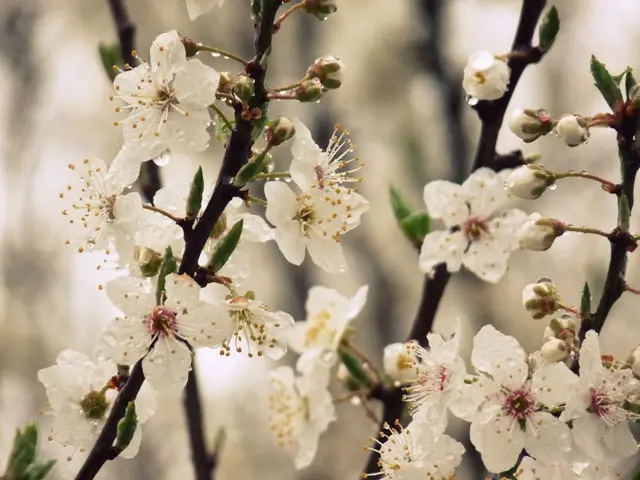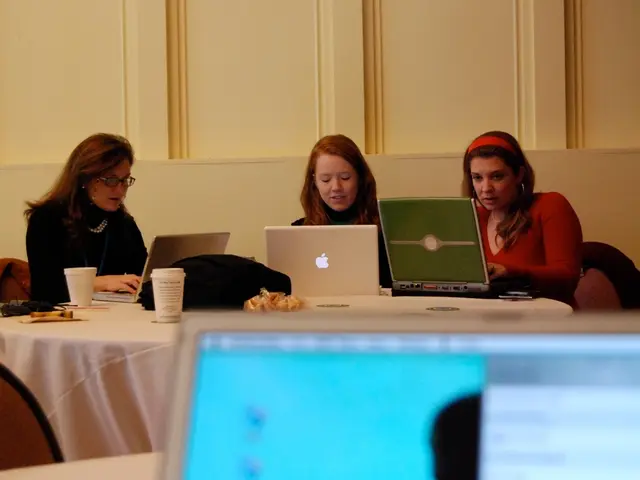Exploring Non-Traditional Art Forms: Pushing Creative Limits in Self-expression
In the world of art, traditional boundaries have been pushed and redefined, giving birth to a vibrant and dynamic movement known as alternative art. This form of expression combines visual art with live action, involving the artist's body as a medium and often evoking strong feelings, offering an immediate experience, and inviting audience interaction.
The focus of alternative art is on the message rather than technique. It encourages viewer participation in the art-making process and fosters community involvement and collaboration. This approach breaks away from the impoverished idea of art, which can limit creativity and restrict true expression.
The roots of alternative art can be traced back to counterculture movements of the 1960s and 1970s, street art, indigenous art forms, and performance art. Key historical movements that have influenced its development include Dada, Expressionism, Futurism, Bauhaus, and various forms of protest art.
Dada, originating during World War I, rejected traditional artistic conventions and bourgeois values through nihilistic and anti-aesthetic approaches. It favoured spontaneity, chance, collaboration, and used collage, photomontage, and found objects. Expressionism, emerging around 1905, emphasized emotional experience over physical reality and bridged other modernist movements. Futurism celebrated modernity, technology, and dynamism but also foreshadowed political engagement and new performance practices. Bauhaus, though primarily an art and design school, developed experimental workshops exploring the body, space, sound, and light, fostering interdisciplinary practices.
Protest art and activism, from the French Revolution to 20th-century civil rights and anti-war movements, have also played a significant role in the development of alternative art. Artists have used this form to challenge social and political norms, including abstract protest art by Kazimir Malevich, Dada’s anti-war critiques, and politically engaged art in the 1960s and 70s addressing racism, sexism, and the Cold War.
Today, alternative art reflects social issues, personal experiences, and cultural shifts. Artists often blend different styles, such as painting, sculpture, and digital media, to create a rich experience for viewers. Street art transforms public spaces into galleries, often reflecting local culture and issues, and making political commentary. It is accessible to all and can take various forms, such as graffiti, murals, and installations.
Digital art uses technology as its primary medium and includes illustrations, animations, and interactive designs. Notable alternative artists include Banksy, Shepard Fairey, Yayoi Kusama, and Yoko Ono. Common themes in alternative art's social commentary include poverty, racism, environmental issues, and gender inequality.
The evolution of 3D art has significantly impacted the way art is perceived, created, and experienced. Artists like Marcel Duchamp, Salvador Dali, Yoko Ono, and Banksy have significantly influenced alternative art with their innovative techniques, provocative messages, and collaboration with communities.
In conclusion, alternative art encourages viewers to think differently and question traditional ideas about art. It is a creative form that challenges traditional art forms and norms, often including street art, multimedia installations, and performance art. Its key characteristics include non-traditional mediums, social commentary, inclusivity, and audience interaction.
- The vibrant and dynamic alternative art movement extends its influence to various aspects of contemporary lifestyle, intermingling with fashion-and-beauty, food-and-drink, and home-and-garden, creating thought-provoking designs and installations.
- In the realm of pop-culture, alternative artists like Banksy and Yoko Ono have become celebrities, Their music, as a form of art, carries the same provocative messages found in their visual works.
- Social media platforms have become vital for alternative artists, providing a new medium to showcase their work, engage with the audience, and spark conversations about relationships, cultural-travel, and global social issues.
- In the spirit of old-school art movements, modern alternative artists continue to express their dissatisfaction with the status quo, creating powerful pieces that challenge political norms, promoting activism, and evoking strong feelings in the audience.
- Travelers seeking unique and immersive cultural experiences can now explore the world of alternative art, from street art tours in New York City to contemporary art festivals in Europe, offering a fresh perspective on the cultural travel movement.




